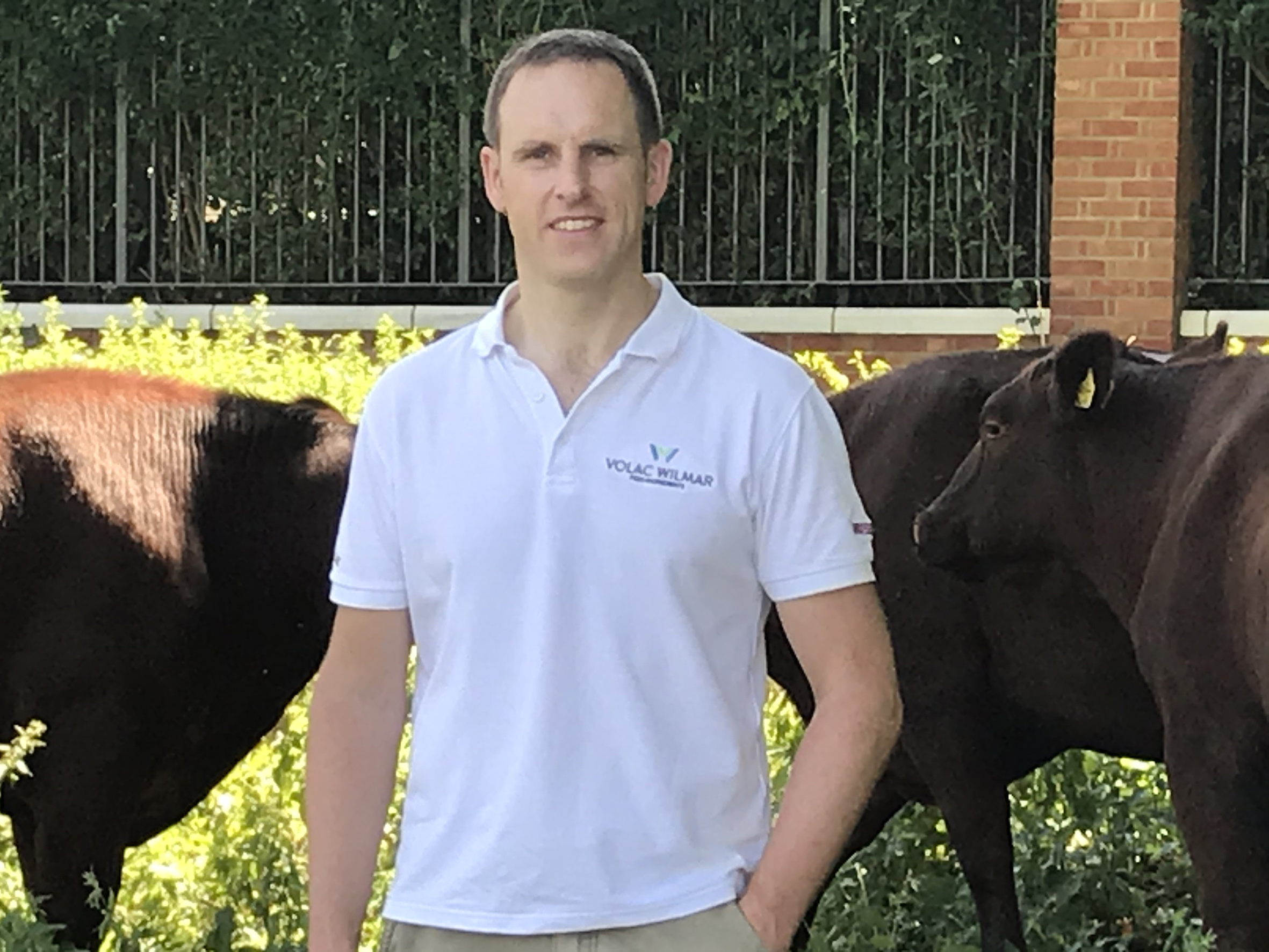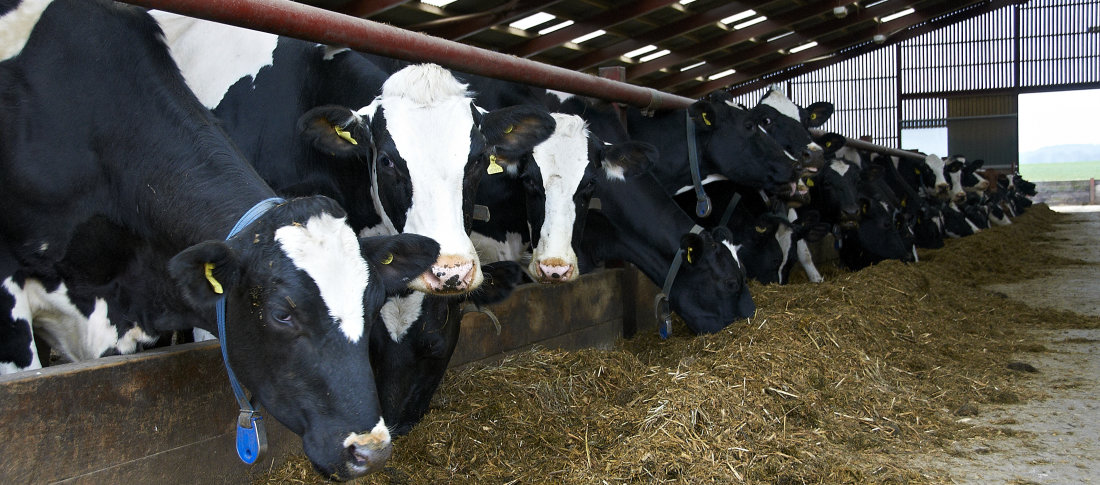Fat has long been viewed as an energy-dense supplement to meet the high energy demands of lactating dairy cows.
While its high energy density makes it a critical nutrient in dairy rations around the world, emerging research has shown it has the potential to make a much more significant impact, says Dr. Richard Kirkland, Global Technical Manager for Volac Wilmar Feed Ingredients.
For 40 years, the company’s flagship Megalac rumen-protected fat supplement has played a role in ration formulation. Throughout this time, extensive independent research has been conducted on fat supplementation at universities and by private sector actors including Volac Wilmar and its partners, in order to better understand how fat and individual fatty acids influence cow performance. The company has worked to apply these findings to the development of applicable products and tools for farm usage.
In this Industry Perspectives piece, Dr. Kirkland updates us on the history of rumen-protected fats and the four-decade legacy since the pioneering launch of the Megalac brand. We learn of the role of fat in rations and how it can improve milk production, fertility and sustainability aspects including methane reduction, as well as the significant influence of individual fatty acids on animal performance which enables nutritionists to target specific fatty acid blends toward on-farm targets.
[Feedinfo] Rumen-protected fats are commonly used in dairy diets across the world. What led to the development of these types of fat?
[Dr. Richard Kirkland] Fat is one of the key macro-nutrients in dairy production, and considerable research on animal requirements has been conducted over several decades. However, it was clear that adding higher levels of oils, or higher fat ingredients, to rations had detrimental effects on fibre digestibility and milk fat. This led to the development of the calcium salt technology in Dr. Don Palmquist’s lab at Ohio State University, USA, which was subsequently developed and commercialised by Volac into the Megalac branded product.
The Megalac brand was the first of the rumen-protected calcium salt formulations and has now been on the market for over 40 years! This development was a revolution in providing the ability to supplement rations with high-energy fat without the negative effects on fibre digestibility and milk fat. Though has been the primary application for rumen-protected fats, they are also common ingredients in diets for other ruminants including sheep, goats and beef cattle.
[Feedinfo] Energy supply was key in the early development of rumen-protected fats. What other unique non-caloric aspects did they bring to diet formulation?
[Dr. Richard Kirkland] With around 2.5 times the energy concentration of cereals, it’s no wonder there’s always been a drive to increase fat supply in rations. However, fat is a unique nutrient and offers flexibility in ration formulation. Not being fermented in the rumen, it allows nutritionists to formulate higher energy density diets without adding to the acid load in the rumen that we would get from starchy sources of energy such as cereals, leading to potential acidotic issues.
The benefits of increased fat concentration in diets on fertility were soon noted and many studies have followed demonstrating improved conception and pregnancy rates. Dietary fat is a key precursor to the production of progesterone, the key ‘hormone of pregnancy’, and with increasing milk production in dairy cows we also see increased clearance of steroidal hormones by the liver. Ensuring sufficient fat supply in the diet is key to helping increase progesterone, an important element driving improvements in fertility.
Moving on from these broad descriptions of the effects of crude fat per se, our understanding of the role of individual fatty acids has since driven the conversation much more toward consideration of the most appropriate blend of fatty acids to supplement, rather than simply concentration of crude fat in the dry matter. This knowledge enables the nutritionist to choose a specific formulation according to specific farm targets.
[Feedinfo] Let’s get a little deeper into that concept of fatty acid nutrition as opposed to simply fat per se. What do you consider the key fatty acids in dairy diets?
[Dr. Richard Kirkland] Fat nutrition has developed considerably in recent years with a greater understanding of the effects of individual fatty acids on aspects of dairy production. At Volac Wilmar our primary interest is in the formulation of different ratios of palmitic (C16:0) and oleic (C18:1) fatty acids, with considerable recent research data having come from Michigan State University, USA, in particular. Research has identified key performance traits of dairy cows we can target using combinations of these two fatty acids. We also see a role for omega-3 fatty acids, particularly as production systems become more intensive with less reliance on grazed pasture, though these are more difficult to deliver in rumen-protected form.
[Feedinfo] You note palmitic and oleic acids as being key. What are the primary effects of these fatty acids?
[Dr. Richard Kirkland] Palmitic acid has been demonstrated to improve milk fat production and ‘high-C16’ supplements (typically 80-90% C16) are commonly used to increase milk fat percent and yield at farm level. Recent data also demonstrate increased NDF digestibility with supplementation of ‘high-C16’ supplements. However, we are now aware that palmitic acid can reduce insulin sensitivity of tissues, driving energy away from body fat stores toward milk energy output and leading to reduced body condition score.
In contrast, oleic acid improves adipose sensitivity to insulin and reduces lipolysis, leading to improved body condition or reduced loss of body fat stores. Oleic acid also has well-established amphiphilic effects, driving micelle formation and total diet fatty acid digestibility, leading to increased energy supply from the basal diet and improved feed efficiency. Research data also show the beneficial effects of oleic acid on development of fertilised eggs, with increased survival to the blastocyst stage during development, leading to an increased likelihood of successful pregnancy.
This knowledge drives our recommendations for which fatty acids are most-appropriate at different stages of lactation – ‘high-C16’ supplements are less desirable in early lactation as they risk exacerbating negative energy balance, whereas higher C18:1 supplements are more appropriate in early lactation for their beneficial effects on energy supply, body condition and developing eggs to improve fertility. On the beef side, we are involved in research looking at combinations of fatty acids to stimulate marbling.
[Feedinfo] Ultimately, farms produce milk for different applications: liquid milk, butter, or cheese for example. Can rumen-protected fats influence suitability for different applications?
[Dr. Richard Kirkland] Specific fat supplements such as the ‘high-C16’ variants can effectively increase milk fat percent which is of great value to many processors. However, we are also interested in the physical characteristics of milk fat and can employ different fatty acid formulations to alter the properties of milk fat to some degree. Highly unsaturated vegetable oils can greatly soften milk fat, risking soft ‘oily’ butter, whereas increasing the supply of palmitic acid can increase the hardness of milk fat to provide different characteristics. Calcium salt supplements like the Megalac formulation deliver a balance of palmitic and oleic and typically provide a lower melting point milk fat which can aid in softer butter or cheese manufacture where these are desired. The key takeaway here is that it is possible to choose a supplement to best reflect the requirements of the final use of milk from an individual farm.
[Feedinfo] Heat stress has become a hot topic in research in recent times. Can rumen-protected fats influence a cow's ability to withstand heat?
[Dr. Richard Kirkland] Fat is what we often describe as a ‘cool’ nutrient. Not being fermented in the rumen, it generates minimal heat increment and similarly, the metabolic efficiency of the use of fat as an energy source or for conversion to milk fat is high, with a Kl value of around 0.82. Consequently, heat arising from digestion and metabolism of fat is much lower than other feed ingredients and the animal generates less internal heat. The inclusion of diet fat is often increased in the hottest part of the year to help reduce metabolic heat and increase energy density to help counter reduced dry matter intake.
[Feedinfo] The ruminant sector is also increasingly under pressure to reduce its methane production. What kind of work has Volac Wilmar done in this area?
[Dr. Richard Kirkland] Improved fibre and fat digestibility through fat supplementation drives improved feed efficiency which in itself is a benefit for sustainable production. However, the uniqueness of rumen-protected fats as non-fermented energy sources means that supplementation removes a portion of methane-stimulating fermentable organic matter from the diet. , following supplementation of a dairy cow diet with Megalac at 2.95% of diet dry matter. This area is currently being explored further through studies in the USA and the Netherlands.
It’s important to remember that rumen-protected fats are common ingredients in ruminant diets, with returns generated from improved productivity benefits regardless of what species they are being used in – dairy cows, sheep, goats, beef or other ruminants. Any reduction in methane is achieved as a side-effect; it’s an additional benefit, rather than an additional cost, for the producer.
[Feedinfo] Finally, sourcing sustainable feed ingredients is an integral part of Volac Wilmar’s policies. What does this entail?
[Dr. Richard Kirkland] Sustainability is at the heart of everything we do. Rumen-protected fats are primarily based on vegetable oils including by-products from the palm oil sector, and as such comply with our comprehensive and strict sustainability policy. Principally, all vegetable oil raw materials sourced comply with the industry-leading NDPE policy introduced by the Wilmar group in 2013. The key elements of this include adherence to principles of No Deforestation, No Development on Peat and No Exploitation of people and local communities. In addition, p including ‘Mass Balance’ and ‘Segregated’ classifications. Thus, from all angles, the combination of sustainable raw material use and highly-effective product formulations which improve efficiency at the farm level contribute to our company’s strong environmental credentials.

Dr Richard Kirkland, Global Technical Manager for Volac Wilmar Feed Ingredients.
Read the original article here
